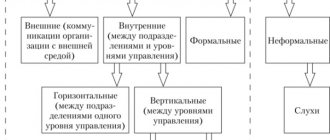Effective communication is more than just sharing information. It's about understanding the emotions and intentions behind words. In addition to being able to convey a message clearly, you need to be able to listen in a way that allows you to get the full meaning of what is being said and make the other person feel listened to and understood.
But it's easier said than done. Each of us has a unique worldview that is influenced by many things: upbringing, personal experiences and environment. Additionally, we convey a message knowing our motives and desires, while recipients do not have that luxury. This leads to ineffective communication.
Ineffective communication means arguing with others, dividing interlocutors into winners and losers. Disagreements and conflicts are the clearest indicators that we are dealing with it.
The goal of effective communication is to establish and protect interconnection, support and working relationships that are mutually beneficial and, therefore, long-lasting. How to achieve this? No one can give you a 100% guarantee, but if you follow certain rules and apply certain techniques and techniques, you can improve your ability to approach people and convey your thoughts clearly and quickly.
Let's start with the rules.
What prevents effective communication?
Anything that prevents us from understanding our interlocutor or conveying our thoughts is called a barrier in the field of communications.
There are several dozen of them, but we will highlight the main ones. Some depend entirely on you, others only partially. If you manage to avoid them, the effectiveness of communication will increase:
- Stress and uncontrolled emotions : When you are stressed or emotionally overwhelmed, you are likely to misread other people, send confusing or dismissive nonverbal signals, and engage in inappropriate behavior.
- Lack of focus : You cannot communicate effectively if you are multitasking. If you're checking your phone, planning what you're going to say next, or daydreaming, you'll almost certainly miss the nonverbal cues in your conversation, or even most of what's being said. Avoid distractions; focus.
- Inappropriate body language : Nonverbal communication should reinforce what is being said, not contradict what is being said. If you say one thing and your body language says another, the listener is likely to sense hypocrisy.
- Negative body language : If you disagree with what is being said, you will often use negative body language to respond to the other person's message, such as crossing your arms, avoiding eye contact, or tapping your fingers. Avoid negative signals and remember: you don't have to agree and you don't have to be insincere.
- Inappropriate physical environment : Noisy cafes or bars are extremely difficult to understand. If you want to have a useful dialogue, choose quieter places.
- Antipathy to other people's thoughts : We humans are often prejudiced. It is worth understanding this in order to analyze how and why the words of the interlocutor influence our thoughts and emotions in a certain way.
As we see, we can remove many of these barriers. The problem is that this requires a conscious desire and long-term work on oneself. But if you want to succeed in life, you cannot do without developing the ability to communicate effectively.
The ability to accept other people's feelings.
This is a very important quality, the absence of which often destroys relationships in the bud.
This is the absence of fear in direct contact with your feelings and the feelings of other people. This is the ability to accept any person’s feelings - pain, despair, joy, indignation, etc. Just accept that at the moment it is one way and not another. Share this pain and joy with him, and not teach him that this is impossible... And within yourself, unconditionally believe that everything can change in the future. It is only this person's feeling of the situation, not the whole person.
Technologies for effective communication
Conventionally, effective communication technologies can be divided into two groups:
- Technologies of persuasion (rational sphere): logic and argumentation are used here. It is assumed that the interlocutor, and you yourself, have a high level of logical and critical thinking. Take these courses to become more persuasive.
- Suggestion technologies: based on an appeal to the unconscious, to human emotions through verbal means. Since they are often manipulative, we will not consider them in this article.
There are four main methods of argumentation:
- The technique of stimulating the imagination involves asking at the beginning of the conversation many questions about the content of the problems that should be considered.
- The “hook” technique allows you to briefly outline the situation and, linking it with the content of the conversation, use it as a starting point for discussing the problem.
- The direct approach involves getting straight to the point without any introduction or preamble.
- The technique of relieving tension requires establishing emotional contact with the interlocutor. For example, a well-timed joke can help with this.
We have already touched on some techniques and skills for effective communication in the article, because they are inextricably linked with rules, barriers and technologies. Let's summarize them and add those that haven't been mentioned yet.
Try to communicate with all people equally : do not behave patronizingly with someone who is lower in position, younger or anything else. This person is, first of all, your communication partner.
Don't complain . This can only be done in exceptional cases. Remember that “people forget what you told them, but they never forget how you made them feel.”
Encourage and motivate your interlocutor . Not only will he be pleased to deal with you, but this technique will also improve your mood. Remember that communication is a two-way process and both sides charge each other with positivity or negativity.
Show empathy . This word has become so firmly established in our vocabulary that we no longer attach much importance to it. But knowing and practicing are two completely different things. Therefore, next time, try to listen to the other person’s answers and consider them from his point of view, and not from the point of view of your biases and beliefs.
Exercise . Yes, you can look for interlocutors and practice on the “battlefield,” or you can first agree with friends or relatives and practice with each other. There are several useful exercises for this:
- Find a topic. Decide in advance how much time you will devote to it.
- Let the interlocutor tell a story from his life. Watch him carefully. Then retell this story, also copying gestures and facial expressions.
- Watch dialogue from a movie without sound with a friend. Try to understand what it is about, how the characters feel and how it all might end.
Principles
Principles of effective communication:
- Communication should be a two-way process. Only if all participants in the conversation are interested in achieving a positive outcome will the prerequisites for its effectiveness arise.
- The person to whom the message is addressed must make every effort to perceive it correctly.
- The person conveying the message must make it as clear, concise and understandable as possible.
- A level of trust must be established between communicating people that is appropriate to the situation being discussed.
- The emotionality of communication must correspond to the message being conveyed.
- Tolerance, as a means of increasing the effectiveness of communication, should be inherent in all participants in communication.
All participants must follow the principles of effective communication. The more committed they are to complying with them, the more productive their interactions will be.
Books
Effective communication is too broad a topic to cover in one article. You can read more about its conditions and techniques in the following books:
- “Fundamentals of the theory of communication” O. L. Gnatyuk.
- “How to talk so that children will listen, and how to listen so that children will talk” by Adele Faber, Elaine Mazlish.
- “I want to speak beautifully! Speech techniques" Natalya Rom.
- “Effective communication. Techniques and skills" Ulla Dick.
- “The Language of Communication” by Marian Bugajski.
- “Theory and practice of intercultural communication” E. N. Belaya.
We wish you good luck!
Did you like the article? Join our communities on social networks or our Telegram channel and don’t miss the release of new useful materials: TelegramVKontakteFacebook
We also recommend reading:
- Storytelling
- Development of communication skills
- Six Key Principles of Effective Communication
- 10 Ways to Improve Your Communication Skills
- How to improve your listening skills
- Communication in business
- Checklist for effective communication
- 6 Effective Communication Techniques
- How to become an active listener
- 3 Eco-Friendly Ways to Get What You Need from Someone
- The Cycle of Effective Communication
Key words:1Communication
Definition of basic concepts
Effective communication - what is it in psychology?
Currently, the importance of communication in a person’s life is constantly increasing, and therefore requires additional study of the technology of effective communication, as well as mastering skills that contribute to this.
The effectiveness of communication in psychology means the optimal way to achieve the goal of communication , in which the loss or distortion of the true meaning of the meanings, attitudes, and reactions transmitted to a person and received from him is minimized.
Problem
Ethics stipulates the rules of behavior that correspond to morality, and etiquette stipulates only external manifestations and forms of behavior in a given situation. This leads to the main problem of communication ethics, when a person acting according to etiquette does not comply with ethical standards.
In this case, he can be considered a liar and a hypocrite, since his words do not correspond to internal attitudes.
In the same way, a person who demonstrates highly moral behavior without observing the basic rules of etiquette .
Therefore, the concepts of communication ethics and etiquette should not be considered separately. While observing the rules of etiquette, you should always remember the morality of your actions, and when performing highly moral actions, you must not forget about etiquette.
Conditions
Speech communication will be successful if the following conditions are met:
- The content of the speech should correspond as much as possible to the purpose of communication , not contain elements that are not related to the topic under discussion, and be concise and adequate.
- The speech must be grammatically correct and accurately reflect the message that needs to be conveyed to the interlocutor.
- The presentation of thoughts should be logical and consistent . A well-structured narrative structure contributes to its successful perception by the listener.
Examples
- Effective communication in conflict. Returning from the army to his parents' house, the son spent the day surrounded by relatives, after which in the evening he got ready to visit close friends. Looking around at the mirror, he heard his father’s demanding voice: “You must be home at 10 pm.” Without stopping what he was doing, the son calmly said: “Forget it, dad. This is already in the past." Conciseness, confidence and calmness in this case were the best way out of a brewing conflict situation, since these are the qualities that are inherent in a mature, independent man.
- Effective communication with children . A very indicative scene from the movie “Gentlemen of Fortune”, when the teacher addresses children who do not want to have breakfast: “Children, breakfast is canceled for today, because we are flying on a rocket to Mars, so take the space spoons in your hands and have a good meal, because We’ll only be back on Earth around lunchtime.”
Adjusting to the children's wishes and subsequent rejection of persuasion, which children are prejudiced against, allowed them to switch their attention and look at the situation from a different perspective.
Factors
What are the factors that contribute to effective communication? the successful outcome of communication :
- A favorable environment in which the conversation takes place . For example, if a situation that implies intimacy, confidentiality of communication, makes it possible for those communicating not to be heard by others, this will contribute to a confidential conversation.
- Compatible psychological characteristics of the participants in the conversation .
This includes the gender, age, character and temperament of the participants. As a rule, communication is more successful among people of close age; also, certain types of people by character and temperament interact better with each other. - Same social status. Interaction will be more successful with people belonging to the same social class.
- A trusting atmosphere in the team, its cohesion. For example, with established benevolent norms of behavior in a team, professional interaction will be an order of magnitude more effective than in a team in which everyone is accustomed to protecting only their own interests.
- Common goals and motives among interacting people. If the situation involves achieving a common goal, as a rule, mutual understanding is established between partners much faster, leading to successful communication.
What are the factors that reduce the effectiveness of communication? These factors significantly reduce the positive outcome of communication :
- The situation is inappropriate to the topic being discussed. For example, when trying to discuss a confidential conversation in a public place, the recipient—the person to whom the message is addressed—will avoid the discussion.
- Different social status. Communication barriers often arise between people belonging to different social classes.
It is determined by internal prerequisites about one’s belonging to another class, a feeling of one’s superiority or, conversely, inferiority. - Disunity in the team. The effectiveness of business communication will significantly decrease if, according to established norms in a team, everyone must protect their own interests - even with the awareness that this will negatively affect the solution of professional problems.
- Various goals. With the initial desire to achieve different goals, especially if it is impossible to achieve a compromise that satisfies all parties, the effectiveness of communication decreases.
Types of norms
Conventionally, all ethical standards of communication can be classified as recommended and mandatory.
The principle “Do no harm” is mandatory
Causing harm to a person, humiliation, oppression, or infringement of rights is not allowed.
At the same time, you should restrain negative emotions even if there is every reason to experience them, and not resort to insults.
Recommended ethical standards do not harm the interlocutor if they are not followed, but they allow one to achieve greater respect and trust in those who follow them. This is maintaining self-esteem, modesty, etc.
Also, ethical standards are dictated by the motives of communication:
- positive , surprise, interest the interlocutor, satisfy his need for understanding, bring him joy, give him a compliment,
- neutral , convey any information,
- negative , express your indignation at a low act.
Each of the reactions shown is ethical, since they do not contradict morality and are justified by highly moral motives.
Behavior that, although outwardly distinguished by impeccable etiquette, is based on, for example, the desire to gain the trust of a person in order to subsequently deceive him .
What is their non-compliance?
It is convenient to consider non-compliance with ethical standards in the resulting defects in communication , which lead to the following forms of decline in morality:
- Moral vacuum . In this case, a person lacks knowledge about ethics as such, or he finds himself in a society whose ethical standards are unfamiliar to him.
- Lack of moral initiative , a person expects morality from a partner, without previously taking any action to establish communication.
- Moral camouflage , the desire to make a good impression on the interlocutor, focusing on the external manifestation of etiquette, which in fact is not supported by truly moral motives. As a rule, this is accompanied by discussions about the decline of morality, obsessive calls to observe the norms of decency.
- Moral regression .
Loss of acquired knowledge, fading interest in observing standards of decency, giving a moral assessment of one’s own actions, as well as ignoring the interests of others. Moral regression is often accompanied by cruelty, practicality, aggression and rationalism. - Intolerance. Characterized by a hostile attitude towards dissident people in religious, political, cultural and other issues. As a rule, it is inherent in authoritarian individuals who have one-dimensional thinking. With such a communication defect, productive interaction can be completely excluded, even in a situation that promises to be beneficial for both parties.
- Primitivism. In this case, the justification for non-compliance with moral standards is past merits or undisguised self-interests, which are satisfied through deliberately anti-moral behavior.
- Moral deafness, lack of desire to hear another person, understand and accept his position.










